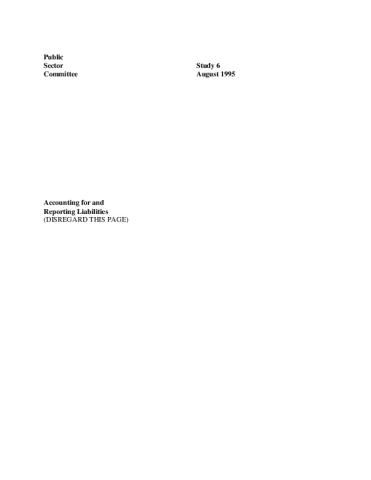Study 6 - Accounting for and Reporting Liabilities
This Study provides a public sector perspective on the definition and recognition of liabilities. It identifies, considers and explores views held on:
- the definition and classification of liabilities;
- the effect of different bases of accounting on accounting for and reporting liabilities; and
- the issues associated with certain types of liabilities.
The Study describes the variety of views which exist about whether, when and how certain liabilities should be measured and reported. Historically, governments have focused on their outstanding debt as a primary measure of the government's liabilities or indebtedness, particularly in formulating or assessing economic policy.
However, governments assume a variety of commitments and obligations that give rise to other liabilities that are often unreported by governments. Yet information about all of a government's liabilities and exposure to potential liabilities is vital if governments are to manage their cash flow and make informed decisions about the financing of future services and resource allocation.
While governments have liabilities similar to business enterprises, they also have other potential liabilities, such as recurring commitments under established social programs, guarantees and promises made by politicians. The study distinguishes liabilities, commitments and contingencies.

